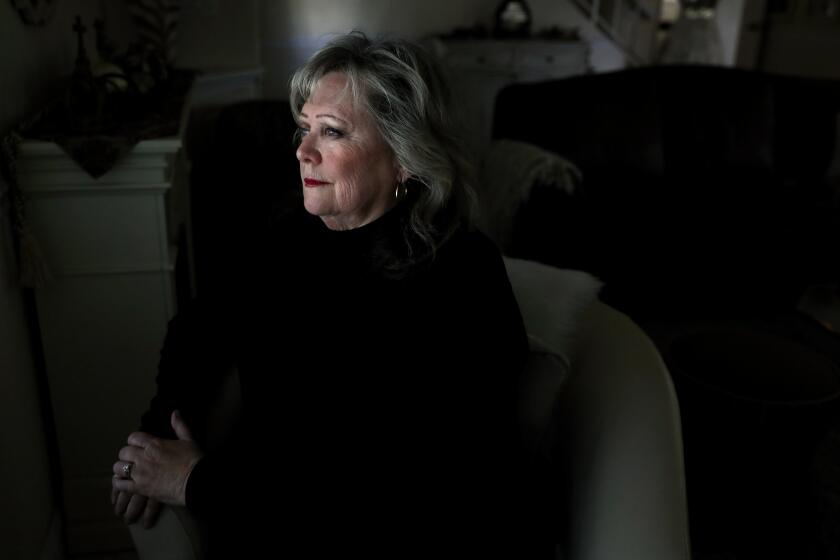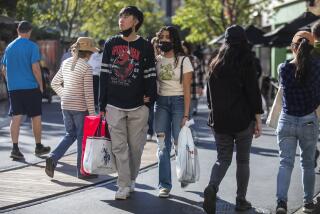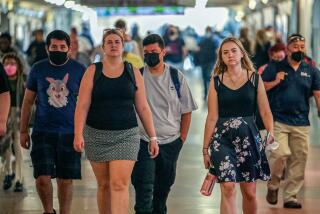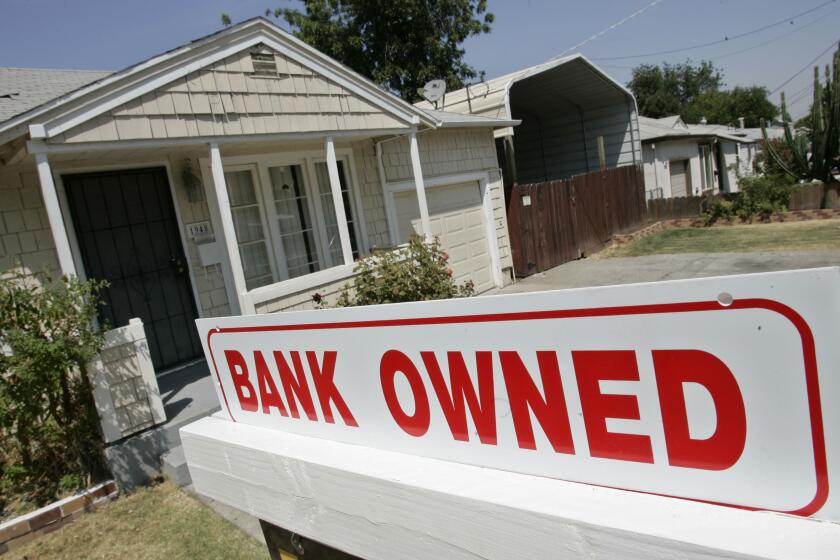California coronavirus cases top 75,000, and nearly half are in L.A. County
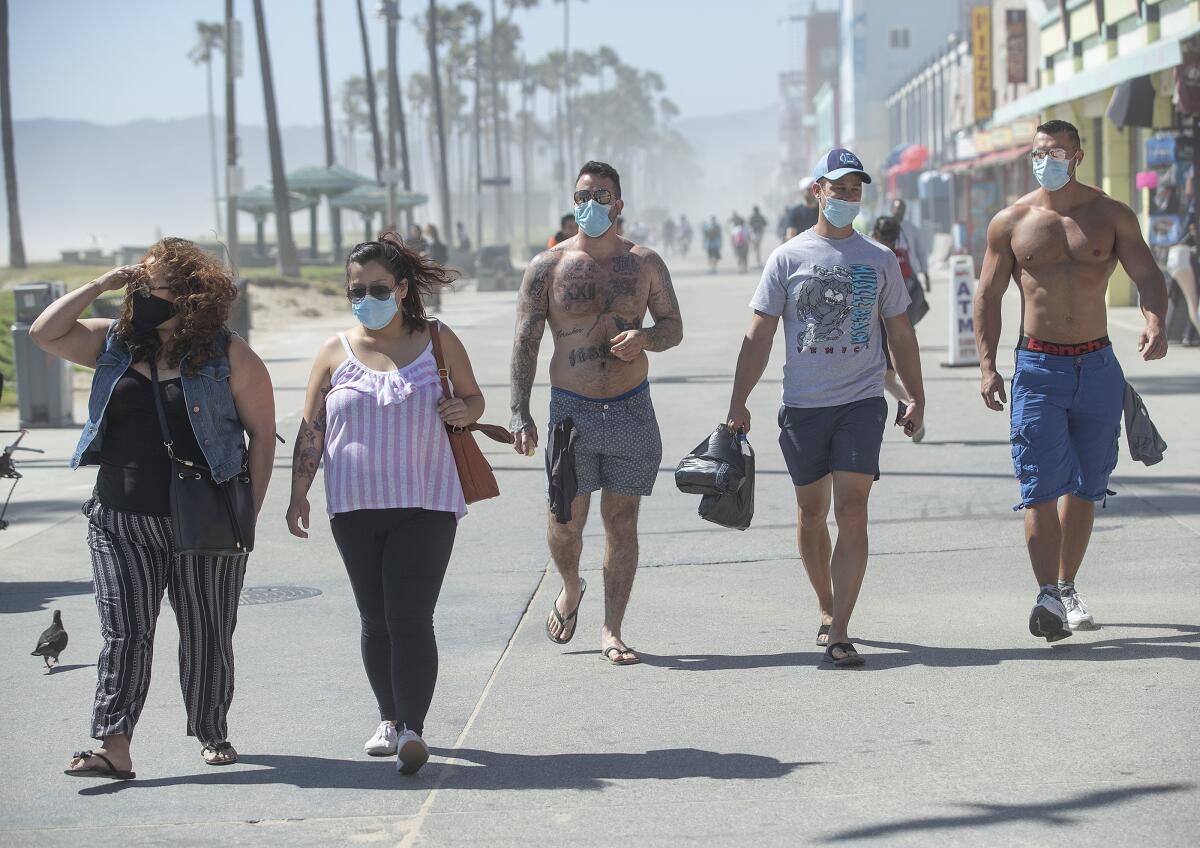
California surpassed 75,000 coronavirus cases Friday as officials continued to ease stay-at-home restrictions.
Statewide, more than 3,000 people have died from causes related to COVID-19.
Nearly half of the coronavirus cases and more than half of the related deaths are among residents of Los Angeles County
The city of Los Angeles saw 395 new cases Friday, bringing the total to 17,432 cases. It’s a 2% increase from the day prior, Mayor Eric Garcetti said.
County public health officials reported 962 more cases and 47 additional deaths Friday, bringing the county’s total to 36,316 cases and 1,753 deaths.
There are currently 1,733 COVID-19 patients in county hospitals, with about 25% in intensive care units.
“As we continue to see slight decreases in the number of people who are hospitalized over the last week and a half, we are encouraged,” said Barbara Ferrer, the county’s public health director.
Garcetti echoed Ferrer’s comments, saying the stabilization of the curve also means the pandemic isn’t growing out of control.
“We’re not seeing the data skyrocket as we did in previous weeks and as time goes on. I want to thank you for helping manage this unprecedented challenge,” he said.
Ferrer said the average number of hospitalizations is one of several metrics officials are monitoring to determine when to relax additional stay-at-home restrictions.
“There are two important questions that we need to be always answering through our recovery journey,” Ferrer said. “The first question is how capable are we of slowing the spread of COVID-19? … And the second question we ask is how effective are we at preventing the spread of COVID-19?”
To answer the first question, the county is looking at five metrics:
- Whether there are enough intensive care beds
- Whether there are enough ventilators
- Whether hospitals have an adequate supply of personal protective equipment
- Whether adequate resources are in place to investigate coronavirus cases reported to the Department of Public Health
- Whether the county has the capacity to administer at least 15,000 tests per day
To answer the second question, the county is monitoring average daily deaths and hospitalizations to ensure those figures have either decreased or remained stable over the last 14 days. They’re also tracking deaths by race, ethnicity and community poverty level to make sure no one group is seeing outsized increases.
Another important component is making sure that the majority of skilled nursing facilities with coronavirus cases have been offered testing to all staff and residents in a timely manner, Ferrer said.
A total of 892 people living in institutional settings have died, the majority of them in skilled nursing facilities, she said. They represent 51% of the COVID-19 deaths reported by L.A. County.
As of Friday, more than 282,000 people in the county had been tested and received their results, with about 11% testing positive. In Los Angeles, 350,000 people have been tested to date.
To reopen safely amid coronavirus, experts need to trace the disease’s origins. But bureaucratic roadblocks and other delays are getting in the way.
Coronavirus hospitalizations appear to be stable in L.A. County, and the county has an adequate number of hospital beds, intensive care units and ventilators to treat the volume of patients expected over the next four weeks, according to projections released this week by a county Department of Health Services team.
Still, researchers say it’s not yet known how the relaxation of stay-at-home rules will affect transmission of the virus.
If spread increases, healthcare facilities could see an influx in patient volume after two to four weeks, according to the county’s modeling.
Even with a marked increase, the county projects there still would be enough hospital beds and ventilators to treat the volume of patients on the high end of the models. But there’s a chance the demand for intensive care beds could surpass the number available by early June, the predictions state.
For that reason, officials say they will be keeping a close eye on the data as stay-at-home rules are relaxed and they could reimpose restrictions if hospitalizations shoot up.
“By supporting our local businesses, by wearing our face coverings, by physically distancing, by washing our hands, by doing what is right, we will get through this together,” Garcetti said. “I hope each week is a brighter one for us. And that’s again as it’s been from the beginning of this, not in my hands, but in yours.”
Amid the continued rise in cases, the Air Force Thunderbirds precision flying team took to the skies over Southern California on Friday for an aerial salute to those on the front lines of the battle against the virus.
Six F-16C/D Fighting Falcons flew in formation over parts of Los Angeles, San Diego, Orange, Ventura and Riverside counties throughout the day to honor first responders, healthcare workers, members of the military and others.
The Thunderbirds are collaborating with the Navy’s Blue Angels and local Air National Guard units to stage similar spectacles as part of a nationwide show of solidarity and support for COVID-19 responders dubbed America Strong.
California reopening: Nearly a third of counties have contained coronavirus enough to allow fewer restrictions.
Though L.A. County has continued to be a coronavirus hotspot, some rural counties have seen comparatively little effect in terms of cases and deaths. As the state moves into what Gov. Gavin Newsom has deemed Phase 2 of its reopening plan, it has become possible for those counties to go further in terms of opening businesses, provided they meet certain criteria.
Nearly a third of California’s 58 counties have certified to the state that they have contained the spread of the virus which allows them to reopen restaurants to dine-in service, as well as shopping malls and other businesses, Newsom said Thursday.
The 19 counties that have attested to meeting state standards for containment are mostly in rural areas of Northern California with small populations. They represent about 4.5% of the state’s population and do not include urban centers such as Los Angeles and San Francisco.
The state is continuing talks with other counties that are trying to meet state standards for testing, hospital availability and numbers of cases.
L.A. County officials are trying to determine whether it’s also possible for individual cities that meet the benchmarks to move to the next stage of reopening, Supervisor Kathryn Barger said Friday.
Barger said that the cities of Santa Clarita, Lancaster and Palmdale have approached the county to inquire about reopening and appear to meet the criteria. She said she’s asked county counsel and the Department of Public Health to provide an analysis of whether there’s anything in the governor’s order that would permit the cities to do so.
Other Southern California counties — Orange, Riverside, San Bernardino and San Diego — are working to forge a coalition to jointly lobby Newsom so they can further reopen their local economies.
L.A. County’s stay-at-home orders will “with all certainty” be extended for the next three months, Ferrer said Tuesday. She later added that even if the orders remain in place through the summer, restrictions will be “gradually relaxed” under a five-step plan.
More to Read
Start your day right
Sign up for Essential California for news, features and recommendations from the L.A. Times and beyond in your inbox six days a week.
You may occasionally receive promotional content from the Los Angeles Times.
